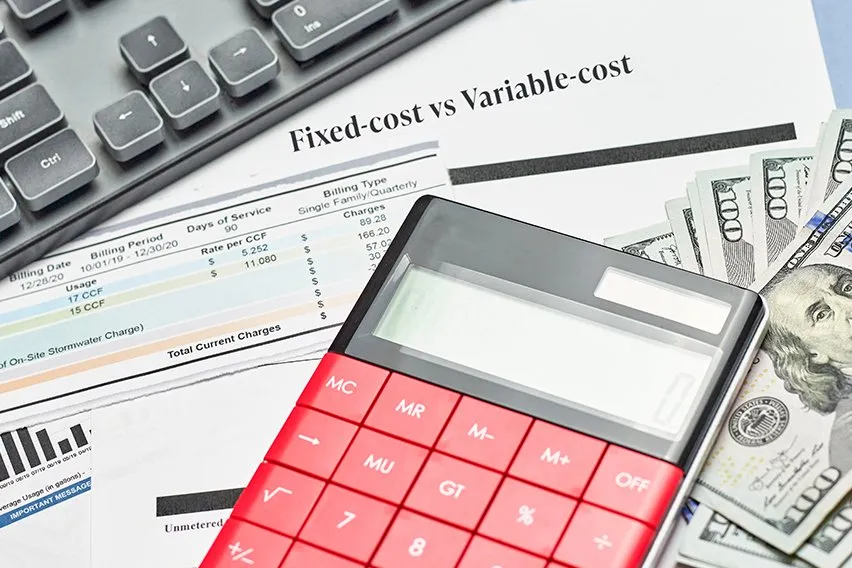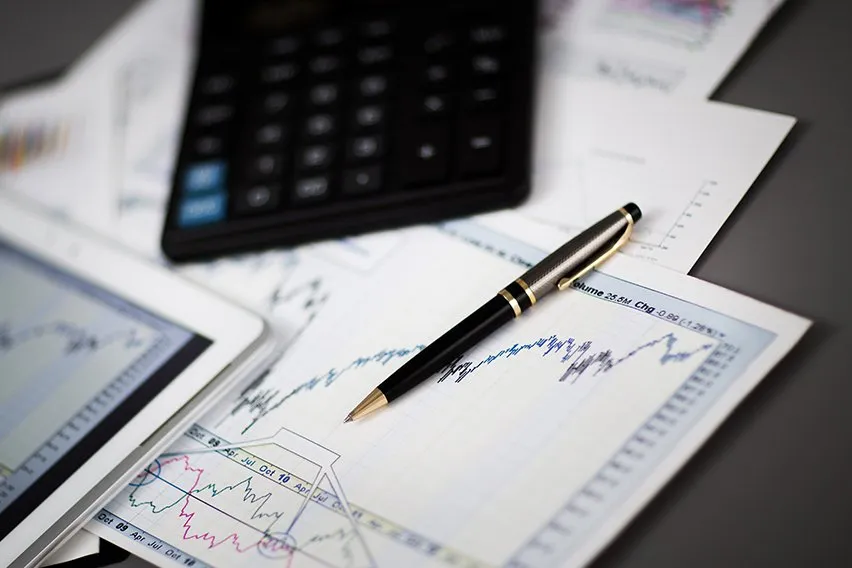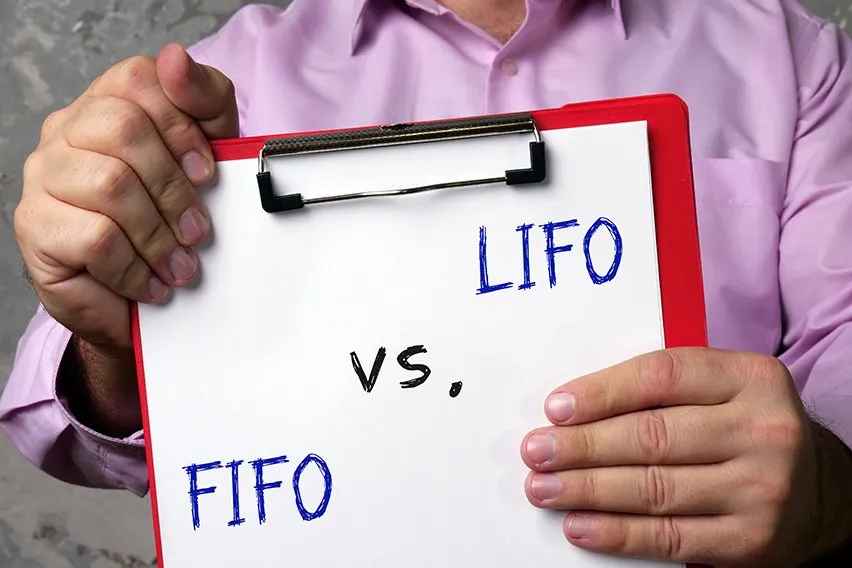Fixed vs. Variable Costs: What’s the Difference

Fixed vs variable cost refers to categorizing business expenses as either static or fluctuating during changes in production output and sales volume. Fixed costs remain the same irrespective of changes in production output, no matter what’s happening in the business. Variable expenses increase or decrease depending on your business activity and revenue.
Understanding the difference between variable and fixed costs is essential for any business. Whether it’s calculating your monthly budget, setting prices for your products, or making important decisions regarding profitability and expense structure for the business, distinguishing between variable and fixed costs is crucial.
In this guide, we’ll explain the difference between fixed and variable expenses, provide examples of each, go over accounting differences for the two, and more.
Key Takeaways
- Fixed and variable costs are the two ways to categorize business expenses that almost all businesses need to pay.
- A fixed cost remains the same regardless of a business’s sales volume, production output, or total revenue.
- Variable costs change in relation to a company’s production output and/or sales volume.
- Analyzing and managing fixed and variable expenses is essential for budgeting, financial strategizing, pricing, job costing, and more.
- Accounting software can help you better track fixed and variable expenses.
Table of Contents
- What Is a Fixed Cost?
- What Is a Variable Cost?
- Fixed vs. Variable Costs Accounting
- Fixed vs. Variable Costs Examples
- Fixed and Variable Costs Budgeting
- Variable vs. Fixed Costs Savings
- What Is the Difference Between Variable and Fixed Costs?
- Why Is It Important to Distinguish Between Fixed Costs and Variable Costs?
- Final Thoughts on Fixed Costs vs. Variable Costs
What Is a Fixed Cost?
A fixed cost is any business expense that remains the same, regardless of how many units your business produces, how many sales it makes, or how much revenue it generates. A fixed cost is a constant expense—something you can predict every single time.

What Is a Variable Cost?
A variable cost is any business expense that increases or decreases in relation to the company’s revenue, production output, or sales volume. These costs are tied to the production of your business’s product or service and will fluctuate depending on your company’s activity. In other words, when you’re producing more units, your variable costs increase. When you’re producing fewer units, your variable expenses decrease. If you’re not producing any units at all, your variable expenses fall to zero.
Fixed vs. Variable Costs Accounting
Both fixed and variable expenses need to be accounted for to provide a complete picture of your business’s overall financial health and profitability. Understanding your fixed and variable costs will help you get more information during financial analysis, make more accurate and useful budgets for the future, and guide decision-making regarding product pricing, expense structures, or expansion plans.
Fixed costs are also known as overhead costs since they remain static and unchanging no matter what your production output is. These are relatively easy to track using your normal accounting methods—they’re entered as expenses, and are subtracted from gross income to calculate net profit.
Any small business owner will have certain fixed costs regardless of whether or not there is any business activity. Since they mostly stay the same throughout the financial year, fixed costs are easier to budget. They are also less controllable than variable expenses because they’re not related to operations or volume.
Variable costs are a little more complicated to track using accounting. Since they’re tied to the production of units or the volume of sales, you’ll first need to calculate the variable cost per unit, which refers to the costs (usually for direct labor and materials) associated with producing a single unit of your product. Then, this per-unit cost is multiplied by the total amount of units you create over a given time to calculate your total variable expenses.
Since they are changing continuously and the amount you spend on them differs from month to month, variable expenditures are harder to monitor and control. They can decrease or increase rapidly, cut your profit margins, or result in a steep loss or a whirlwind profit for the business.
Fixed vs. Variable Costs Examples
1. Fixed Costs Example
Fixed costs are expenses that are incurred regardless of changes in production or sales of the business. These costs are usually recurring expenses, such as employee salaries or monthly rent payments. Other fixed expenses include telephone and internet costs, insurance, and loan repayments.
For example, say you rent a warehouse for your business for $40,000 per month, your rent costs will be $40,000 each month, regardless of how many products you sell. This makes rent a fixed cost since it doesn’t change with your sales volume.
Just because a cost is fixed doesn’t mean that it won’t change—it simply means that the cost is not tied to changes in production output. So the rent of your warehouse may increase, but this change is separate from increases or decreases in your production output or revenue.
2. Variable Costs Example
Variable cost change is directly related to your production output. So, if you produce zero products in a period, your variable costs for that period would also be zero. Examples of common variable costs include:
- Direct labor
- Direct materials
- Commissions
- Transaction fees
- Production equipment
- Utility usage fees
Variable expenses are calculated by first calculating the variable cost per unit—what it costs to produce a single unit in expenses such as labor and materials. You then multiply this by the total number of units produced to calculate your total variable costs for the production of that particular product.
Fixed and Variable Costs Budgeting
For your business budget to be useful, it needs to forecast both fixed and variable costs. Successful businesses will use their knowledge of their fixed and varying expenses to allocate their resources efficiently, ensuring there’s always enough money to cover fixed overhead expenses and to pay for the variable costs associated with unit production.
Maximizing profitability comes down to effectively managing both fixed and variable costs. Your business should strive to keep its variable cost per unit as low as possible without compromising on quality—this ensures you’re getting as much profit as possible for each unit sold. While fixed costs can’t be lowered in the same way, you can effectively lower the impact of fixed expenses on your bottom line by increasing production and lowering variable costs—this is known as economies of scale.
Variable vs. Fixed Costs Savings
Managing variable costs tends to be fairly straightforward. For example, if you invest in more energy-efficient machinery, it will eventually pay for itself and save you money by lowering your utility bills. If you switch to a cheaper material for your units or find ways to complete the same tasks with fewer labor hours, you’ll also save. These are all valid ways to cut variable costs and increase your profit margins.
Fixed overhead costs are more complicated to control. While you can theoretically rent a cheaper property for your work or downgrade your telephone service to get a cheaper plan, your business will always have fixed overhead costs of some kind. Instead, it’s recommended to find ways to reduce variable costs and increase production to offset the burden of fixed overhead costs on your budget.
You should also be considering ways to manage fixed expenses whenever you look at expansion for your business—is a larger, more expensive warehouse worth it when you consider how much your production output will increase? Answering questions like this will help you keep fixed and variable costs under control, ensuring profitability for your company.
What Is the Difference Between Variable and Fixed Costs?
| Fixed Costs | Variable Costs | |
| Meaning | Fixed expenses are costs that remain constant for a period of time regardless of changes in production output. | Variable expenses are costs that change directly and proportionally to the changes in business activity level, production output, or sales volume. |
| Incurred when | Fixed costs are always incurred, even if production output or sales volume is nil (zero). | Variable costs are incurred when production output or sales volume increases. |
| Also known as | Fixed costs are also known as overhead costs, period costs, or supplementary costs. | Variable costs are also referred to as prime costs or direct costs, as they are directly affected by output levels. |
| Nature | Fixed costs are time-related (i.e., they remain constant for a period of time). | Variable costs are volume-related (i.e., they change with changes in output level). |
| Examples | Depreciation, interest paid on capital, rent, salary, property taxes, insurance premiums, etc. | Commission on sales, credit card fees, utilities, direct materials, wages of direct labor staff, etc. |
Why Is It Important to Distinguish Between Fixed Costs and Variable Costs?
It’s vital for small business owners to distinguish between fixed and variable costs. There are countless reasons for this, such as to help budget effectively, set prices, cost jobs and orders, and strategize for future growth.
Other information that can only be gained by differentiating fixed and variable costs includes:
1. Break-Even Analysis
Understanding the difference between fixed expenses and variable expenses is essential for identifying a profitable price level for your products or services. This is done by performing the break-even analysis (dollars at which total revenues equal total costs), which requires fixed expense information. The formula for calculating your break-even analysis is:
Break-Even Point = Fixed Costs / (Revenue – Variable Costs)
The equation not only provides valuable information about pricing but can also be modified to answer other important questions, such as the feasibility of a planned expansion.
Break-even analysis can also provide information about projected profits for those considering buying a business. The equation can help them calculate the number of units and the dollar amount needed to make a profit, and then decide whether these numbers seem credible and realistic.
2. Economies of Scale
An understanding of the fixed and variable expenses can be used to identify economies of scale. Economies of scale is the name of a financial concept that states that, as output increases, fixed costs will be spread over a larger number of output items, therefore decreasing their overall impact on the business’s bottom line and helping you save money.
Both fixed costs and variable costs provide a clear picture of the overall cost structure of the business. Understanding the difference between fixed costs and variable expenses is important for making rational decisions about business expenses which have a direct impact on profitability.

Final Thoughts on Fixed Costs vs. Variable Costs
Understanding your fixed and variable costs is essential for running your business effectively and efficiently. With a thorough understanding of the difference between variable and fixed costs, and information on how to control each of them to ensure profitability, you’ll be able to scale and grow your business consistently over time.
If you’re looking for an easier way to track and manage your business’s fixed and variable costs, you’ll find the monitoring tools offered by accounting software helpful. With detailed tracking capabilities and powerful reporting features, accounting software makes it easier than ever to run your business with confidence. Try FreshBooks free today!
Reviewed by
Jami Gong is a Chartered Professional Account and Financial System Consultant. She holds a Masters Degree in Professional Accounting from the University of New South Wales. Her areas of expertise include accounting system and enterprise resource planning implementations, as well as accounting business process improvement and workflow design. Jami has collaborated with clients large and small in the technology, financial, and post-secondary fields.
RELATED ARTICLES



 Gross Profit Margin: Formula, Calculation and Example
Gross Profit Margin: Formula, Calculation and Example Bank Reconciliation: What It Is and How to Do It
Bank Reconciliation: What It Is and How to Do It What is Solvency vs Liquidity?
What is Solvency vs Liquidity? How to Calculate FIFO and LIFO
How to Calculate FIFO and LIFO How To Prepare An Income Statement
How To Prepare An Income Statement Single-Entry Bookkeeping: Single-Entry vs Double-Entry
Single-Entry Bookkeeping: Single-Entry vs Double-Entry